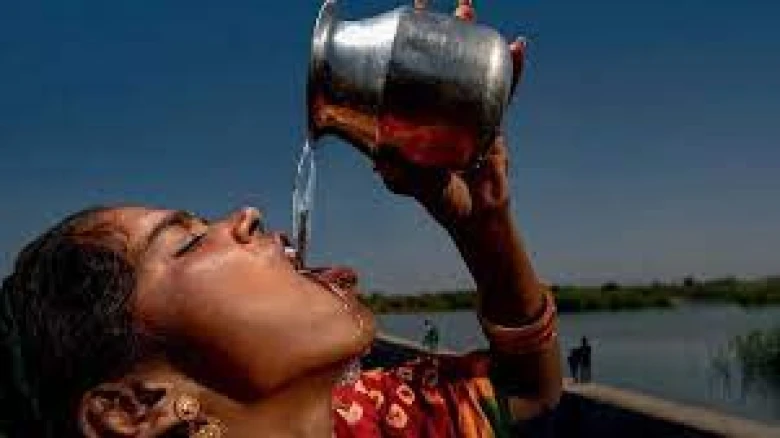Regional

The situation is worse in villages than in cities, as more than half of India's population lives in villages...
Digital Desk: The government has admitted in parliament that the country's water quality is worsening. The government's statistics presented in the Rajya Sabha are alarming as well as shocking. These statistics indicate that the water we have been drinking till now is "poisonous." Most districts and nearly all states in the country were found to have excessive levels of hazardous metals in the groundwater.
The Figures
- Groundwater has more than 0.01 mg of arsenic per liter in some parts of 209 districts throughout 25 states.
- The level of iron in groundwater is over 1 mg per liter in some parts of 491 districts throughout 29 states.
- The level of cadmium in groundwater has been found to be higher than 0.003 mg per liter in various regions of 29 districts across 11 states.
- The amount of chromium in groundwater exceeds 0.05 mg per liter in some parts of 62 districts across 16 states.
- More than 0.03 mg per liter of uranium has been found in groundwater in 152 districts across 18 states.
80 percent of the population drinks poisonous water
As per the documents of the Ministry of Jal Shakti, over 80% of the population in the country gets water from the ground. Therefore, if the amount of hazardous metals in groundwater surpasses the established standard, the water is turning into "poison."
The government also revealed in the Rajya Sabha the number of residential areas where sources of drinking water have become polluted. Based on this, there are 111 places with toxic metals, 671 areas with fluoride, 814 areas with arsenic, 14,079 areas with iron, 9,930 places with salinity, and 517 areas with nitrate.
The situation is worse in villages than in cities, as more than half of India's population lives in villages. The primary water sources in this area are hand pumps, wells, rivers, or ponds. Here, water is extracted straight from the ground. In villages, there are typically no other options for cleaning this water. As a result, rural populations are forced to drink poisonous water.
How dangerous is this water for your health?
It is generally assumed that an average individual drinks 3 liters of water every day. However, as per government documents, it is recommended to drink at least 2 liters of water each day to stay healthy. Even if you only drink 2 liters of water per day, some amount of poison is still entering your body.
Our health is directly impacted by groundwater contamination that exceeds the permitted level for arsenic, iron, lead, cadmium, chromium, and uranium.
- An excessive amount of arsenic increases the risk of skin problems and cancer.
- Excess iron can lead to nervous system diseases such as Alzheimer's and Parkinson's.
- Too much lead in the water can harm our nervous system.
- Kidney disorders are more likely to develop when cadmium levels are high.
- Excessive chromium can lead to generalized hyperplasia in the small intestine, which increases the possibility of malignancies.
- Kidney problems and cancer are more likely to develop when there is too much uranium in drinking water.
Actions taken by the government
The central government informed the Parliament that as water is a state concern, it is the duty of the states to provide the public with safe drinking water. However, the central government is also implementing numerous programs to supply safe drinking water.
The government informed the Lok Sabha on July 21 that the Jal Jeevan Mission began operations in August 2019. By 2024, every rural home will have access to drinking water through taps under this plan. According to the government's reply, so far, out of 19.15 crore rural households in the country, 9.81 crore households are being supplied with tap water.
In addition, the central government launched the AMRUT 2.0 scheme in October 2021. Accordingly, a goal has been established to provide tap water to all cities within the next five years, or by 2026.
Leave A Comment